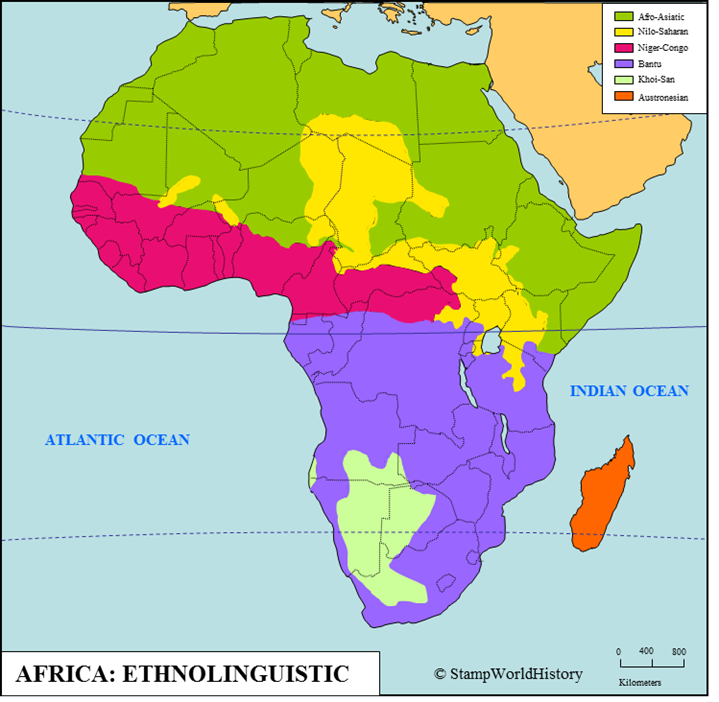In the country profiles of Africa I characterize the peoples living in the various countries as belonging to a number of ethnolinguistic groups. This map provides an overview of these ethnolinguistic groups and their distribution across the continent.
Ethnolinguistics is a branch of linguistics in which linguistic characteristics are combined with ethnic characteristics to identify different peoples and related groups of peoples. Ethnicity, in this context, is understood to comprise all social, cultural, religious and linguistic characteristics that define the identity of a people. Please note that race is not necessarily among these characteristics.
As such, ethnolinguistic differences between peoples may be one of the ways to try to understand the complex dynamics on the African continent. Such as the vast differences between the Afro-Asiatic north, where Arabic is widely spoken and Islam the predominant religion, and the Niger-Congo/Bantu south where elements of the indigenous cultures seem to be much more on the forefront. In some cases, the borders of ethnolinguistic groups run straight through countries. Recent developments in Mali and Nigeria may be understood better when looking at the ethnolinguistics differences between the peoples living in the different parts of these countries.
Please note, though, that both in linguistics and in the study of ethnicity several approaches exist. Neither are exact sciences providing straightforward answers. Please note also that ethnolinguistic characteristics are only one of the dimensions through which one may try to get a grasp on the developments in modern Africa. Other dimensions would be, for example, the social and political impact of over a hundred years of colonial rule or the economic developments.
← Previous page: Africa - Colonial AfricaNext page: Africa - Modern Africa →


Interesting map Gerben!
Do the ethnolinguistic characteristics reflect sociocultural differences as well? Or did the “Scramble for Africa” and the language and culture imposed by the colonies have a larger outside influence? Or was the strongest influence Islam/Christian cultural differences?
I don’t know the answers, just speculative musings on my part….
Jim
I guess to answer your questions libraries full of books have been written. I actually doubted for a long time whether to put the map on the site or not. Both anthropology and linguistics would seem to be sciences that do not necessarily provide clear cut answers, abounding in different – often conflicting – theories, definitions, classifications. That being said the ethnolinguistic differences – the term being understood as comprising all social, cultural, religious and linguistic characteristics that define the identity of a group of people – may be one piece in the puzzle of understanding Africa. For example the differences between the Afro-Asiatic north where Arabic is spoken and Islam is the predominant religion and the Niger-Congo/Bantu southern part of the continent. Interesting is also how the ethnolinguistic borders sometimes run straight through a country explaining maybe some of the dynamics in such a country. Recent developments in Mali and Nigeria are good examples. But as I said it is only one of the aspects that define modern Africa and thus it may raise more questions than it answers……
I will add some more context to go with the map though. Thanks for your questions.